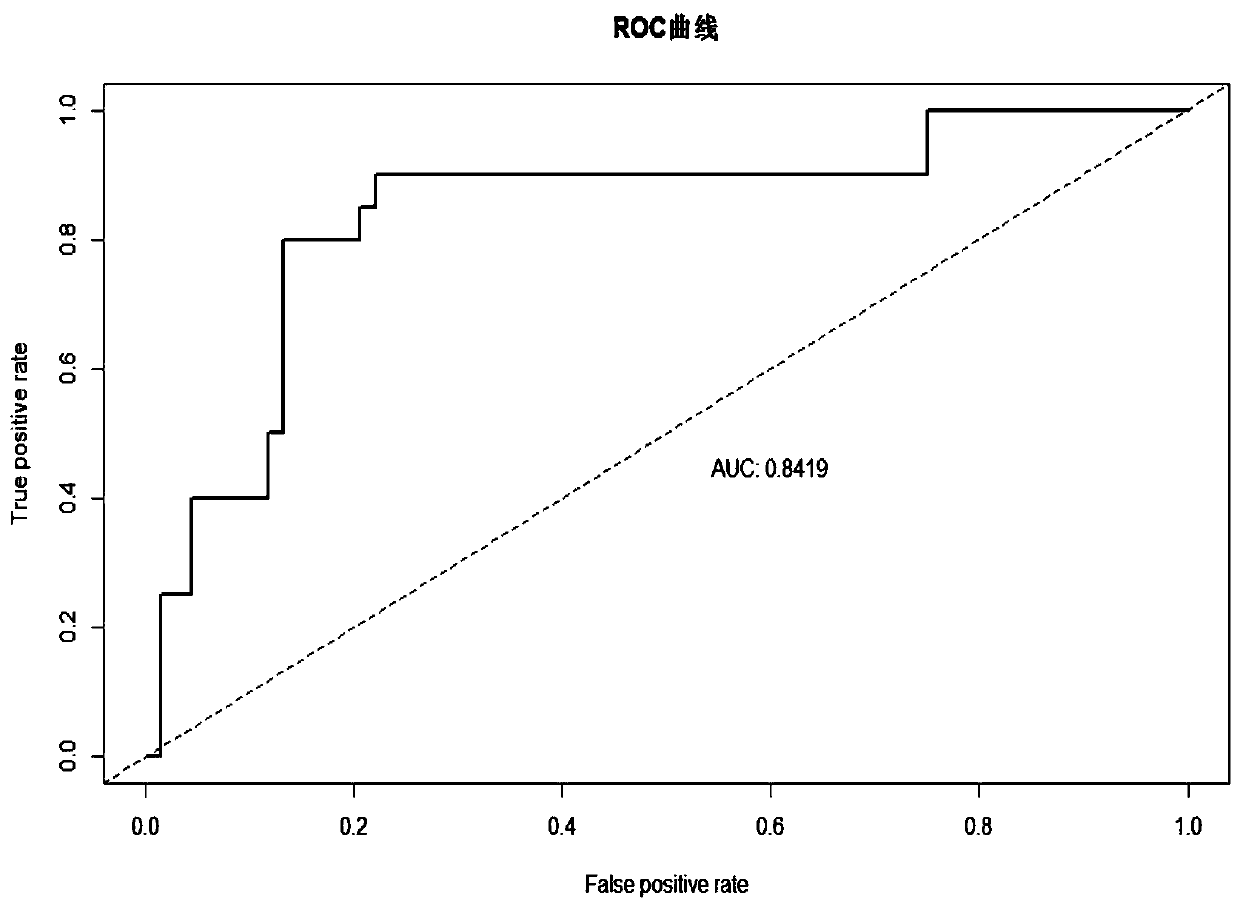Obstetric operation resource allocation prediction system
A prediction system and resource allocation technology, applied in the field of biomedicine, can solve problems such as non-significant impact and inability to effectively predict massive postpartum hemorrhage in pregnant and lying-in women, to ensure objectivity and accuracy, scientific and accurate prediction and evaluation, reasonable The effect of medical resources
- Summary
- Abstract
- Description
- Claims
- Application Information
AI Technical Summary
Problems solved by technology
Method used
Image
Examples
Embodiment 1
[0051] Example 1: Low-risk cases
[0052] Pregnant woman 29 years old (X 1 =29), produce 1 time (X 2 =1), 1 abortion (X 3 =1), vaginal delivery 0 times (X 4 =0), the gestational week 36+5 weeks (X 5 =0), no abnormal implantation of the placenta (X 6 =0), P value = 0.0467 <0.268, indicating that postpartum hemorrhage is not prone to occur in this case, and the buzzer alarms. After the patient was full-term and before contractions occurred, the patient was subjected to a planned cesarean section operation. The operation procedure was carried out in accordance with the general cesarean section operation procedure. There was no major hemorrhage during the operation and the patient's mother and child were safe.
Embodiment 2
[0053] Example 2: High-risk cases
[0054] Pregnant woman 32 years old (X 1 =32), produce 0 times (X 2 =0), 0 abortions (X 3 =0), vaginal delivery 0 times (X 4 =0), the gestational week 37+5 weeks (X 5 =1), placental adhesions (X 6 =1), the calculated P value=0.271>0.268, which indicates that this case is prone to postpartum hemorrhage and the buzzer alarms. The patient has been in bed and recuperated before delivery. After full-term and before the contraction occurs, the patient will be scheduled for cesarean section. During the operation, 1 will be the chief physician and 2 nurses will be added. The blood bank has been notified 4 days before the operation. 6000ml plasma. During the operation, the patient suffered severe bleeding. After treatment and blood transfusion, the patient was out of danger. From the end of the cesarean section to 24 hours after the delivery, the patient did not experience severe bleeding.
[0055] 2. The establishment process of the prediction system of...
PUM
 Login to View More
Login to View More Abstract
Description
Claims
Application Information
 Login to View More
Login to View More - R&D
- Intellectual Property
- Life Sciences
- Materials
- Tech Scout
- Unparalleled Data Quality
- Higher Quality Content
- 60% Fewer Hallucinations
Browse by: Latest US Patents, China's latest patents, Technical Efficacy Thesaurus, Application Domain, Technology Topic, Popular Technical Reports.
© 2025 PatSnap. All rights reserved.Legal|Privacy policy|Modern Slavery Act Transparency Statement|Sitemap|About US| Contact US: help@patsnap.com



